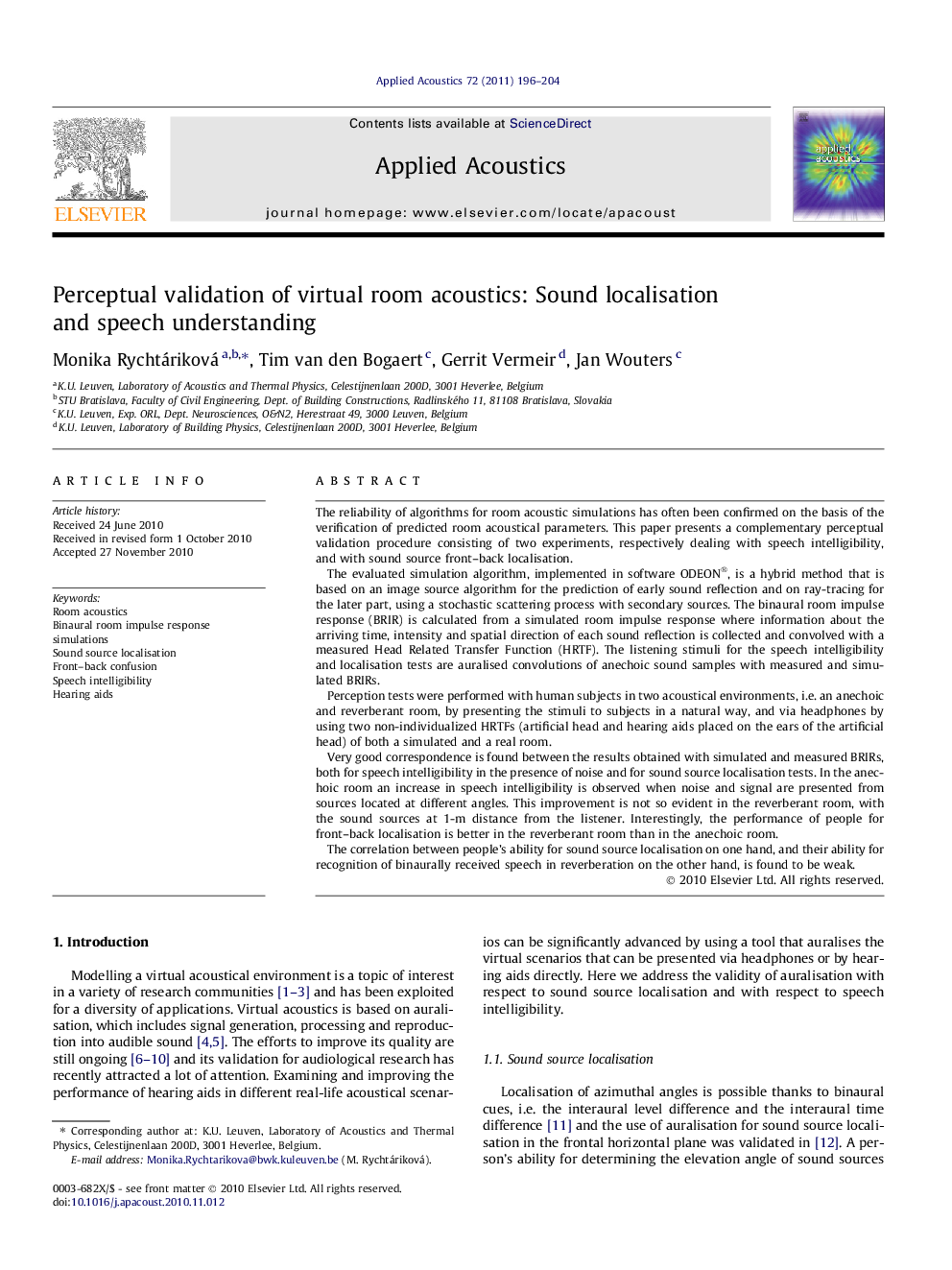| کد مقاله | کد نشریه | سال انتشار | مقاله انگلیسی | نسخه تمام متن |
|---|---|---|---|---|
| 754540 | 895865 | 2011 | 9 صفحه PDF | دانلود رایگان |

The reliability of algorithms for room acoustic simulations has often been confirmed on the basis of the verification of predicted room acoustical parameters. This paper presents a complementary perceptual validation procedure consisting of two experiments, respectively dealing with speech intelligibility, and with sound source front–back localisation.The evaluated simulation algorithm, implemented in software ODEON®, is a hybrid method that is based on an image source algorithm for the prediction of early sound reflection and on ray-tracing for the later part, using a stochastic scattering process with secondary sources. The binaural room impulse response (BRIR) is calculated from a simulated room impulse response where information about the arriving time, intensity and spatial direction of each sound reflection is collected and convolved with a measured Head Related Transfer Function (HRTF). The listening stimuli for the speech intelligibility and localisation tests are auralised convolutions of anechoic sound samples with measured and simulated BRIRs.Perception tests were performed with human subjects in two acoustical environments, i.e. an anechoic and reverberant room, by presenting the stimuli to subjects in a natural way, and via headphones by using two non-individualized HRTFs (artificial head and hearing aids placed on the ears of the artificial head) of both a simulated and a real room.Very good correspondence is found between the results obtained with simulated and measured BRIRs, both for speech intelligibility in the presence of noise and for sound source localisation tests. In the anechoic room an increase in speech intelligibility is observed when noise and signal are presented from sources located at different angles. This improvement is not so evident in the reverberant room, with the sound sources at 1-m distance from the listener. Interestingly, the performance of people for front–back localisation is better in the reverberant room than in the anechoic room.The correlation between people’s ability for sound source localisation on one hand, and their ability for recognition of binaurally received speech in reverberation on the other hand, is found to be weak.
Journal: Applied Acoustics - Volume 72, Issue 4, March 2011, Pages 196–204